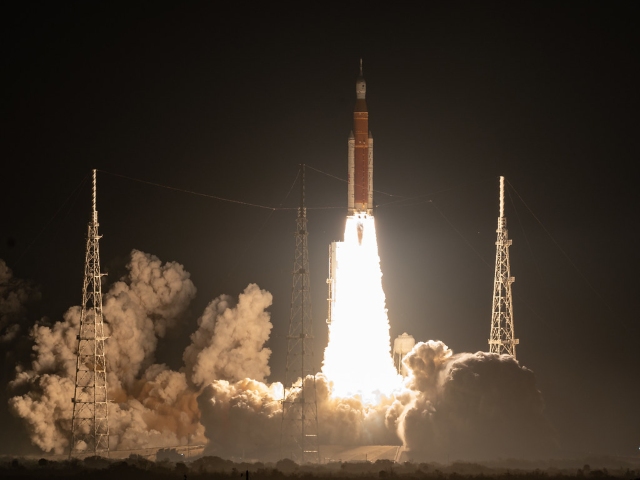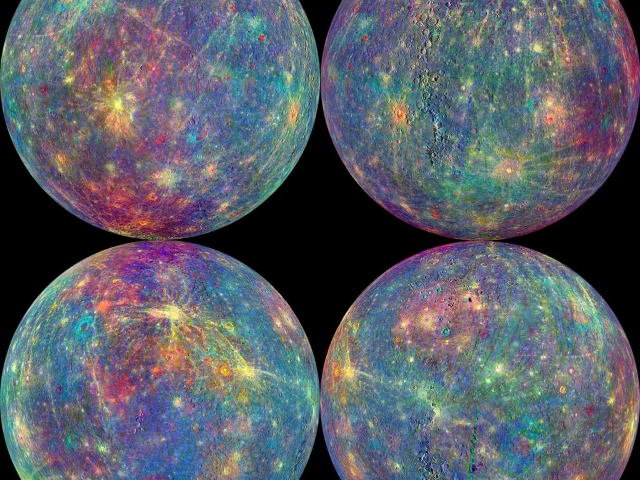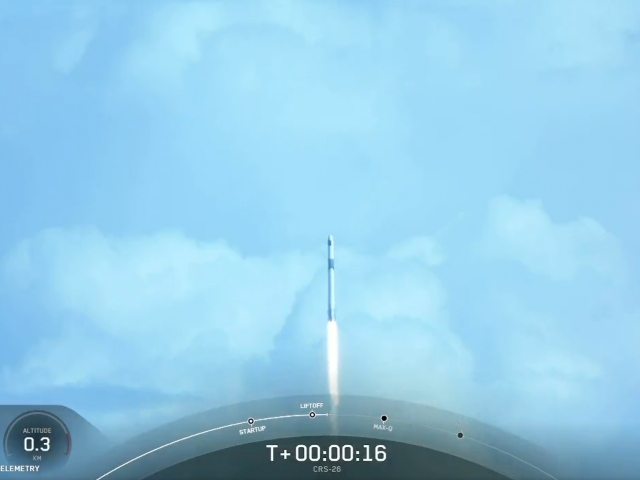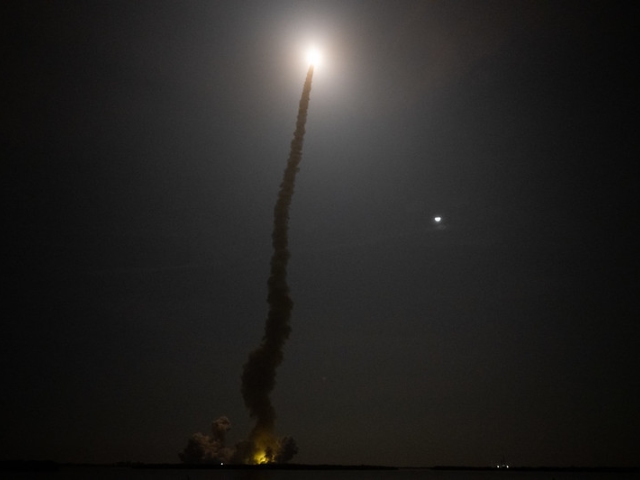
-
Space
-
Karoo For The Win – Matjiesfontein Assisting NASA In Getting Humans Back To The Moon
11 Jan 2023 by Tayla / No Comments
It’s a big win for the Karoo that the South African National Space Agency (SANSA) and NASA have renewed their partnership in lunar exploration.
-
Your Mercury Retrograde Guide For 2023 (Kicking Off Over New Year)
12 Dec 2022 by Tayla / No Comments
This is a part of that safe space on the internet where we blame all of our personal problems on a planet a million light-years away.
-
Incredible Bird’s-Eye View Of The Falcon 9 Rocket Launch [Videos]
29 Nov 2022 by Tayla / No Comments
The man who managed to see SpaceX’s Falcon 9 rocket lift off from his seat on a United Airlines flight said it totally topped any in-flight-entertainment.
-
Highlights From NASA’s Launch Of The Most Powerful Rocket Ever [Videos]
17 Nov 2022 by Tayla / No Comments
The SLS lifted off from Kennedy Space Centre early Wednesday morning and sent the Orion spacecraft on a 25-day journey to the Moon and back.
-
Astronaut Snaps Two Otherworldly Orbs On Earth From Space [Images]
18 Oct 2022 by Jacqui / No Comments
An awesome photo of Earth made waves on the internet. The image featured two blue ominous orbs, hovering over our planet.
-
What A Massive Asteroid Striking Earth Would Look Like [Video]
13 Oct 2022 by Tayla / No Comments
The simulation, exploring what would happen if a 500-kilometre-wide asteroid collided with Earth, doesn’t really make for cosy viewing.
-
NASA Asteroid Debris Spotted By SA Observatory
28 Sep 2022 by Jasmine Stone / No Comments
The South African Astronomical Observatory captured images of the moment of impact which “shows debris flying off the asteroid”.
-
Here’s The Exact Moment NASA Took Out That Asteroid [Video]
27 Sep 2022 by Jasmine Stone / No Comments
If you’re playing catch-up, you should know that yesterday, roughly seven million miles from Earth, a NASA spacecraft crashed head-on into an asteroid.
-
Neptune’s Ring Has Never Been Seen In Such Detail Before
22 Sep 2022 by Tayla / No Comments
We’ve only ever seen this icy giant in great detail when NASA’s Voyager 2 became the first and only space probe to fly past it for just a few hours in 1989.
-
The James Webb Telescope Is At It Again
14 Sep 2022 by Tayla / No Comments
The latest showcase is of the Orion Nebula, a star nursery located 1 350 light-years from Earth in the Orion constellation, now revealed in incredible detail.
-
Predictable Reaction After Request To Name Uranus Probe
13 Sep 2022 by Tayla / No Comments
Earlier this year, a panel of experts from the US National Academies recommended a mission to the ice giant.
-
James Webb Space Telescope Captures Cosmic Tarantula [Images]
07 Sep 2022 by Tayla / No Comments
Being 161 000 light-years away was no problem for the highly sensitive James Webb Space Telescope, which captured the cosmic arachnid in stunning detail.
-
James Webb Space Telescope Nails The Phantom Galaxy
30 Aug 2022 by Tayla / No Comments
The remarkable gold-plated, infrared eyes have been capturing far-flung galaxies as well as shedding light on a bevvy of scientific questions and concerns.
-
Watch History Being Made With NASA’s Moon Megarocket Launch [Live Video]
29 Aug 2022 by Jasmine Stone / No Comments
Today is a pretty big day for NASA and, I guess, the world at large. For the first time in 50 years, NASA plans to launch a rocket that can ferry humans to and from the moon.
-
US Congress Admits It Doesn’t Believe All UFOs Are “Man-Made”
24 Aug 2022 by Tayla / No Comments
In the latest budget for the country’s intelligence services, the Pentagon has been requested to focus its UFO investigation in a surprising direction.
-
Ever Wondered What A Supermassive Black Hole Sounds Like? You’re In Luck [Video]
23 Aug 2022 by Tayla / No Comments
NASA released the first track of the void, in a listenable form fit for human ears, and it really is rather unsettling.
-
It’s Impossible Not To Feel Tiny While Zooming In On The Cartwheel Galaxy [Video]
16 Aug 2022 by Tayla / No Comments
While seeing the Cartwheel Galaxy in such clear light is impressive, a new video released by the European Space Agency shows just how incredibly far away it actually is.
-
James Webb Space Telescope Sheds New Light On Incredible Cartwheel Galaxy [Images]
03 Aug 2022 by Tayla / No Comments
JWST has peered into deep space again with its infrared gaze and discovered the “stellar gymnastics in The Cartwheel Galaxy”.
-
Sold! Buzz Aldrin’s Space Jacket Just Set A New Record
27 Jul 2022 by Tayla / No Comments
Aldrin stepped onto the lunar surface after Neil Armstrong, with the duo becoming the first astronauts to walk on the moon on July 20, 1969.
-
Power Of The James Webb Space Telescope Summed Up In A Single GIF
27 Jul 2022 by Tayla / No Comments
The JWST views light in the infrared spectrum – on Earth, we can feel infrared light as heat – which allows the instrument to see far, far more of the universe.
-
Astronomers Pinpoint Incredible Discoveries Via James Webb Space Telescope [Images]
21 Jul 2022 by Tayla / No Comments
Sifting through the public James Webb Space Telescope datasets, stargazers across the planet have been hard at work.
-
SpaceX Has Some Serious Competition In The Race To Mars [Video]
20 Jul 2022 by Tayla / No Comments
Two private space companies announced to the world that they’re collaborating on an ambitious joint venture to be the first commercial mission to Mars as soon as 2024.
-
The James Webb Space Telescope Encounters Its First Major Problem
19 Jul 2022 by Tayla / No Comments
It turns out that all those lovely golden mirrors on the miraculous James Webb Space Telescope (JWST) are quite vulnerable to being damaged by space rocks.
-
Latest Round Of Incredible Images From James Webb Space Telescope
13 Jul 2022 by Tayla / No Comments
The first image was shown to the world on Monday, but little did we know that NASA would be releasing other amazing photos from the first batch throughout yesterday.
-
SpaceX Setback After This Massive Booster Explosion [Videos]
12 Jul 2022 by Tayla / No Comments
As part of the preparations to send the Starship rocket up to space, the booster was undergoing tests at the company’s Starbase facility in Boca Chica, Texas, when suddenly it went boom.
-
Here It Is: First Image From $10 Billion James Webb Space Telescope
12 Jul 2022 by Tayla / No Comments
The James Webb Space Telescope shows us a version of the universe that is chock-a-block with galaxies, some ranging back to an unimaginable time.
-
Our Favourite Shots From The 2022 Astronomy Photographer Of The Year Shortlist
05 Jul 2022 by Tayla / No Comments
The 2022 shortlisted images are nothing short of spectacular, from a mesmerising moonrise moment over an ancient English tower to a surreal shot of the Milky Way above the highest highway in the world.
-
Why Astronomers Are Revisiting An ‘Alien Signal’ From 1977
29 Jun 2022 by Tayla / No Comments
Jerry Ehman had his ear to the universe on August 15, 1977, working on the Search for Extraterrestrial Intelligence programme, or SETI, when he heard a very interesting signal.
-
Chinese Scientists Reckon They Might Have Found A Sign Of Extraterrestrial Life
15 Jun 2022 by Tayla / No Comments
China’s massive ‘Sky Eye’ FAST telescope, the world’s largest alien-hunting radio telescope, seems to have picked up a strange signal which could suggest that there is indeed life beyond Earth.
-
Jozi Residents, Here’s What You Saw In The Sky On Sunday [Videos]
07 Jun 2022 by Tayla / No Comments
On Sunday night, the sky above Johannesburg shone bright with strange lights for a moment, leaving many residents wondering what was going on.
-






















































